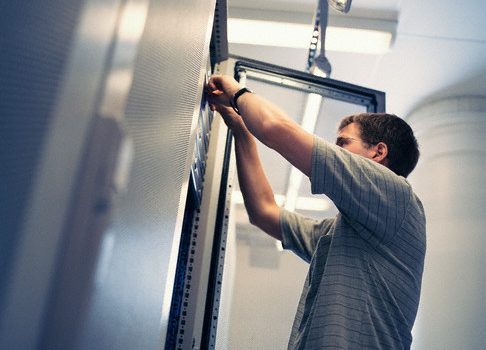As they age, computers tend to slow down. This can be caused by several different factors including hard drive wear, viruses, low memory, and worn out components. Often, people just keep trudging forward with a slow computer, possibly feeling like “this just is how it is,” but a lot of times you can either replace a component, change some software, or in an ultimate case scenario, buy a new computer altogether.

So, how best to tackle this situation? We have a few tips to help you sort out what needs to be done to help your aging PC.
Upgrading Hardware
A lot of times, there is a component or two that has become worn out with use and needs to be replaced. With desktop computers, this can be a fairly easy fix, as long as you have the knowhow or know someone who is very tech savvy that can find the faulty component, help you acquire a good replacement, and install it for you.
Hard Drive
The hard drive or hard disk is what stores all the info on your PC. This includes documents, photos, music, and videos, as well as all the files necessary to run your operating system, or OS. You’ll notice issues with the hard drive when your computer is slow to do nearly any mundane task such as opening or saving a text document. If this happens, your hard drive may be close to full, so it doesn’t have room on it to move files around, which it does constantly.
By deleting large, unneeded files, you can free up a lot of space. Try moving photos, music, and videos to an external hard disk so you can free up a lot of space without losing anything. Running Disk Cleanup on Windows can also free up some space (the computer will purge unnecessary files, but it won’t delete personal items like documents, photos, music, or videos). It’s generally best to keep about one third of your total drive space free. If you’re having trouble doing that, it may be time for a new internal hard drive.
Solid State Drive
A solid state drive (SSD) works like a hard drive in that it stores information and can also house the OS. The difference is, hard drives read and write information on disks, but SSDs work on flash memory, like a camera’s SD card or a thumb drive. These drives are very fast, and if
you install a fresh OS on one, you might swear you bought an entirely new computer. SSDs are just as easy to install as hard drives: just mount it in a free bay inside the computer and connect the SATA cable to the proper port on the motherboard.
Memory
The computer’s memory, or RAM, is different from the hard drive in that they allow you to perform multiple tasks at once, rather than storing data. Very old computers only had 128 kilobytes of memory in them. Most modern computers have 6 to 8 gigabytes (about 50,000
times more!) available to use. Computers that are around 5 years old likely only have 1 to 2 gigabytes of memory, and if you use a lot of tabs in your browser or listen to music in the background while doing other tasks, it can be very taxing on a computer with that little memory. By upgrading the memory, you’ll be able to do a lot more.
Software Upgrades
Sometimes, outdated software can slow down your PC. By upgrading to the latest version, you may fix bugs that allow it to perform better. Other times, it can be better to uninstall a program that you don’t use anymore. This will free up hard drive space and prevent your computer from allocating resources to something unnecessarily.
Light OS
When you purchase a new computer, it usually comes preloaded with programs. Many of these are what is called “bloatware.” They are added by the manufacturer in the hopes that you’ll purchase programs they make. Some can be useful, free programs, others can be resource hogs. A fresh install of an OS from a disk usually won’t have any sort of bloatware on it, and your computer will run faster because of this.
Alternatively, you can install a different type of OS. Windows is the most common OS on PC, but you could also install a version of Linux, such as Ubuntu or ChromeOS. ChromeOS is made by Google for their Chromebook laptops, and most of these laptops are low power systems that are best for light use, such as just storing music and photos, browsing social media, and streaming videos. These rigs aren’t meant for high demand programs like computer games, video editing, or other resource intensive tasks. As such, a ChromeOS could be
installed on a standard PC with little issue, and it will run like a dream. The OS also feels similar to Windows, so it will be familiar.
New PC
Lastly, you can always get a new PC. Both desktops and laptops have come down in price over the years, and many of them will do far more than the average user needs. For really light use, a Chromebook or Chromebox has a light OS that makes it web friendly, but won’t handle much more than that, music, and pictures. Average laptops can do a bit more, so there are a wider array of options for things to do and programs to use. Building a PC from scratch can potentially be pricey, but it’s the best way to get exactly what you need, especially if you need it to do a lot of resource heavy work, like video editing, photoshop, large spreadsheets, and gaming.
Even if there will be “a newer, better PC in 6 months,” if you need a new computer, get one. It will last you several years and will be able to do significantly more than your old system could too.
Source:
http://www.pcmag.com/article2/0,2817,2407812,00.asp



